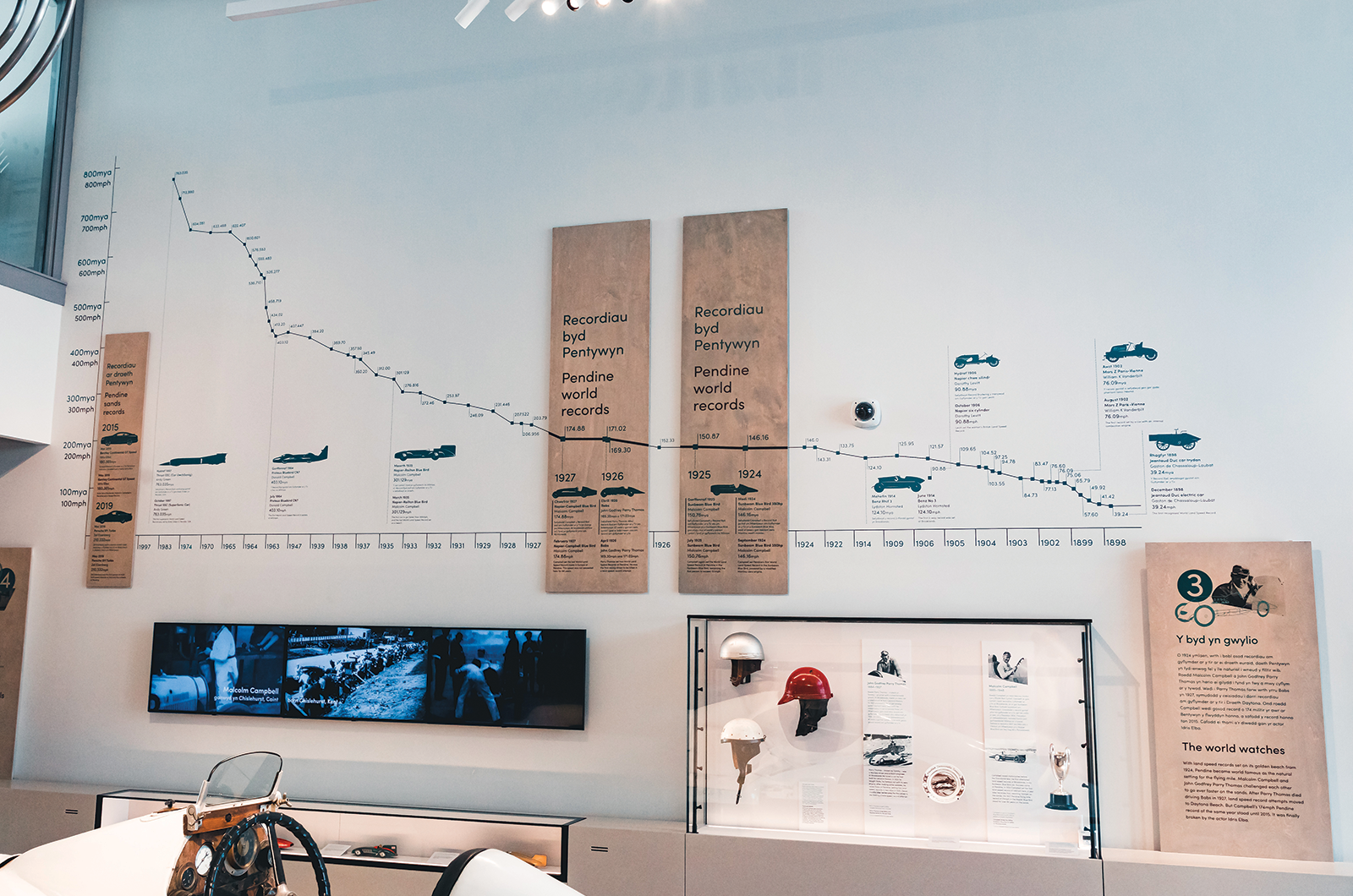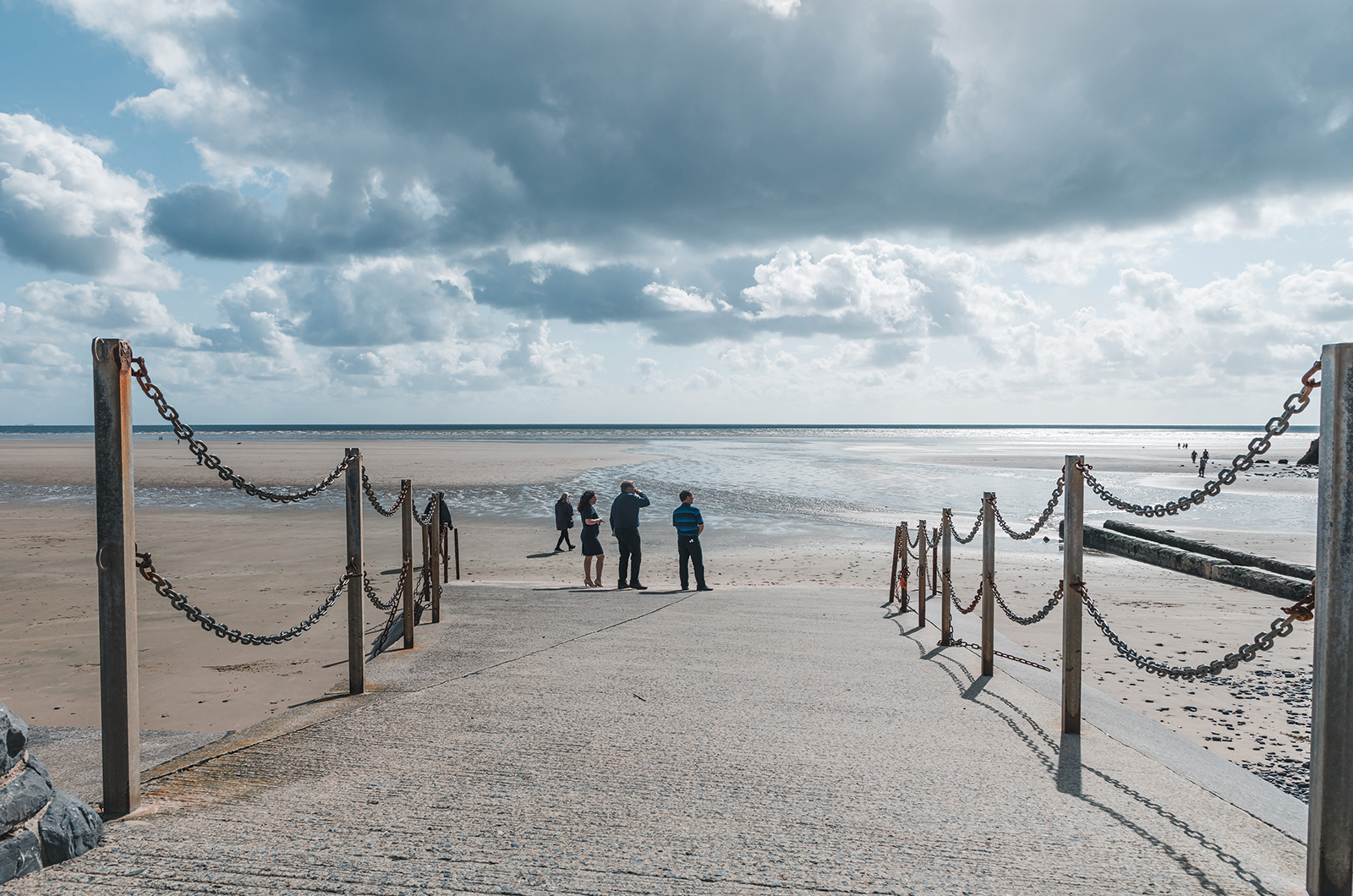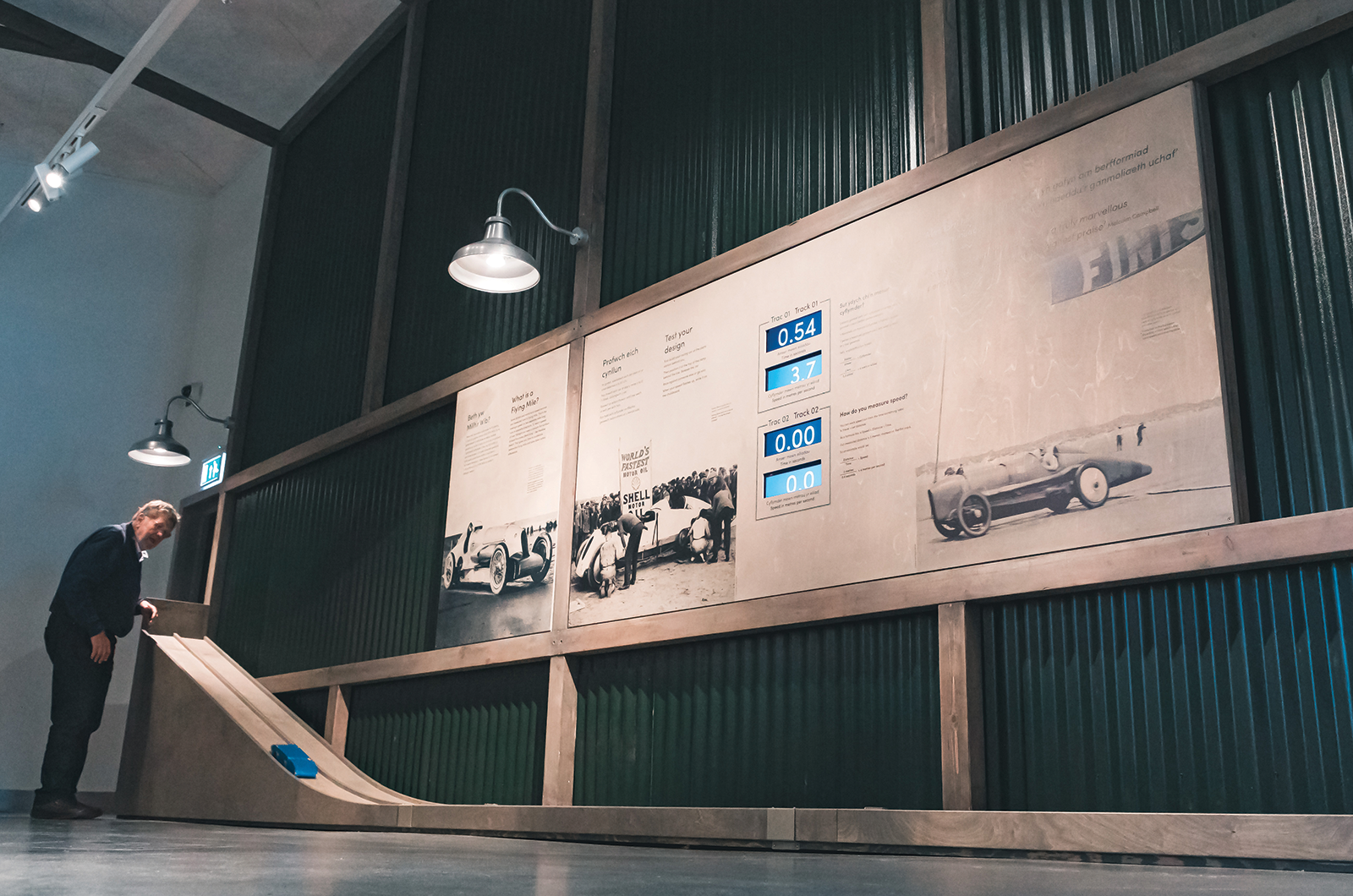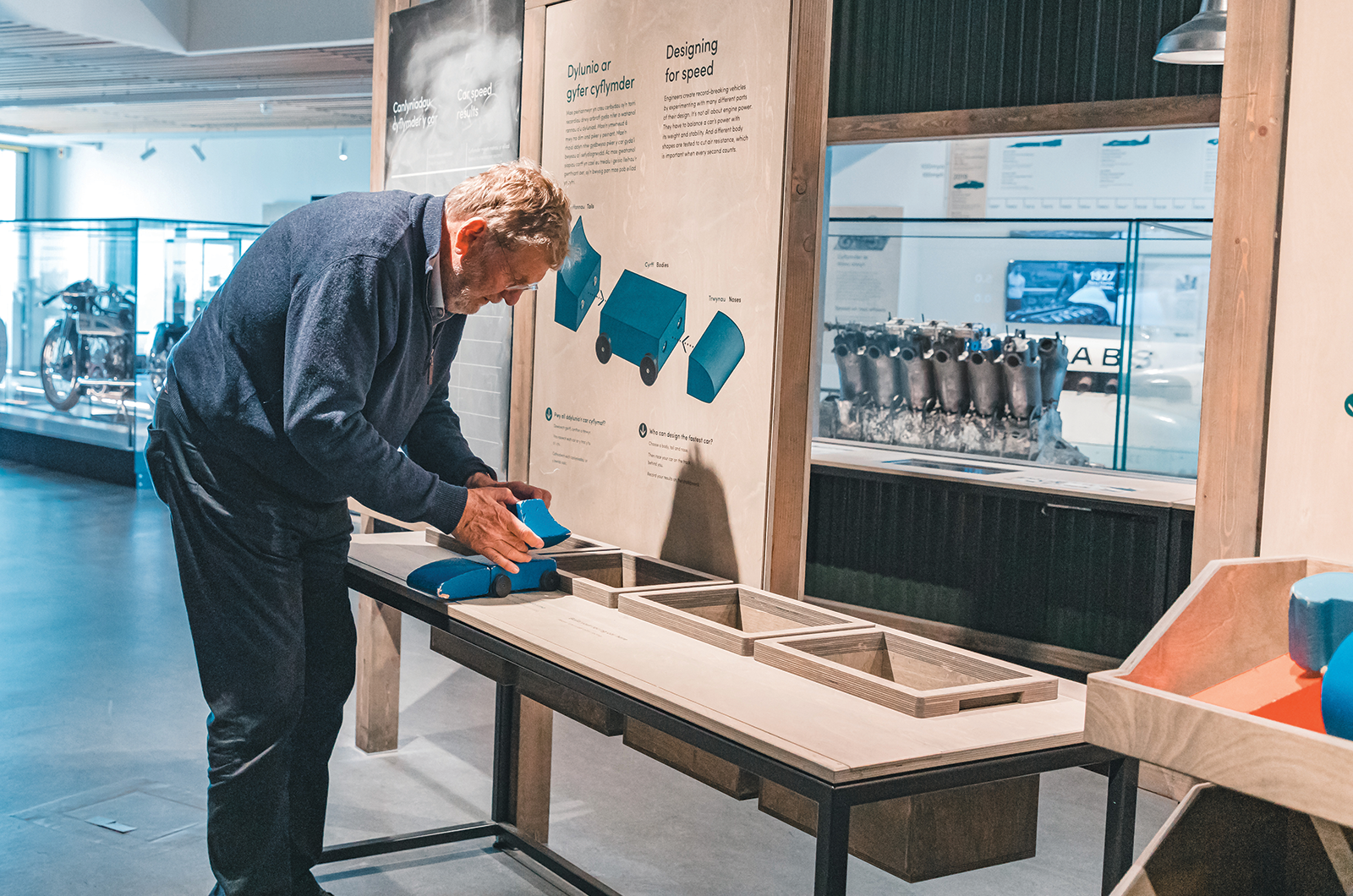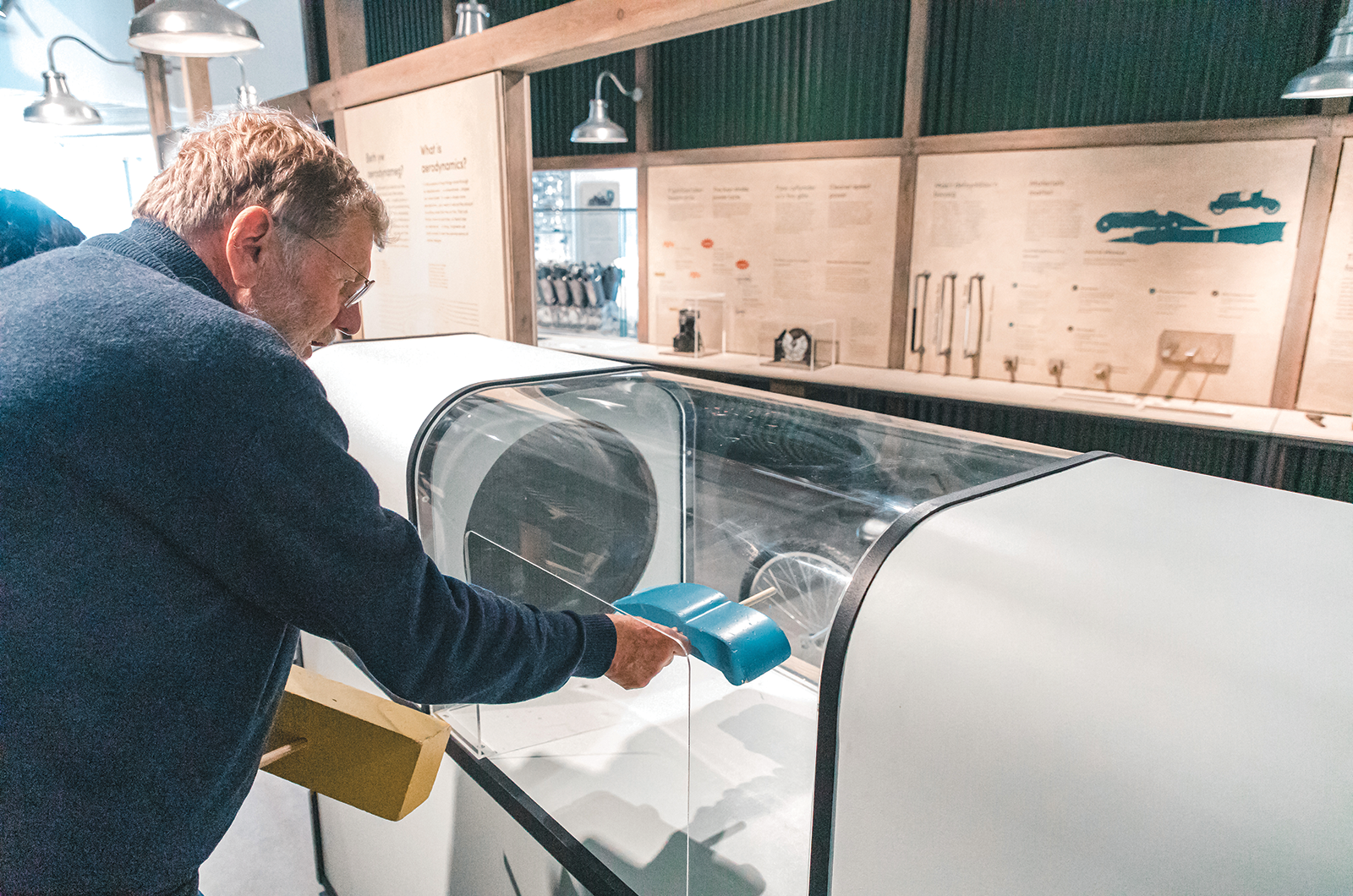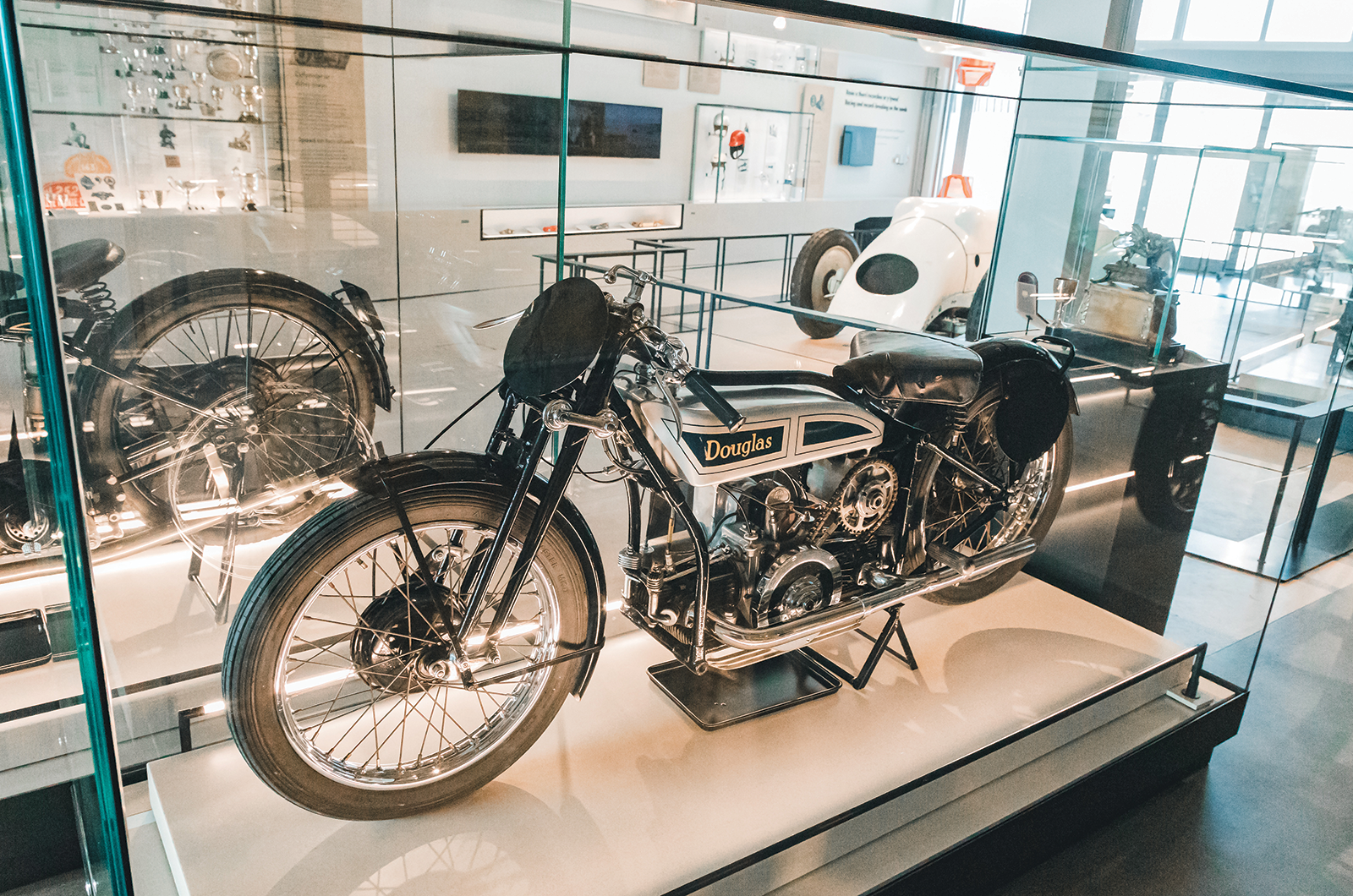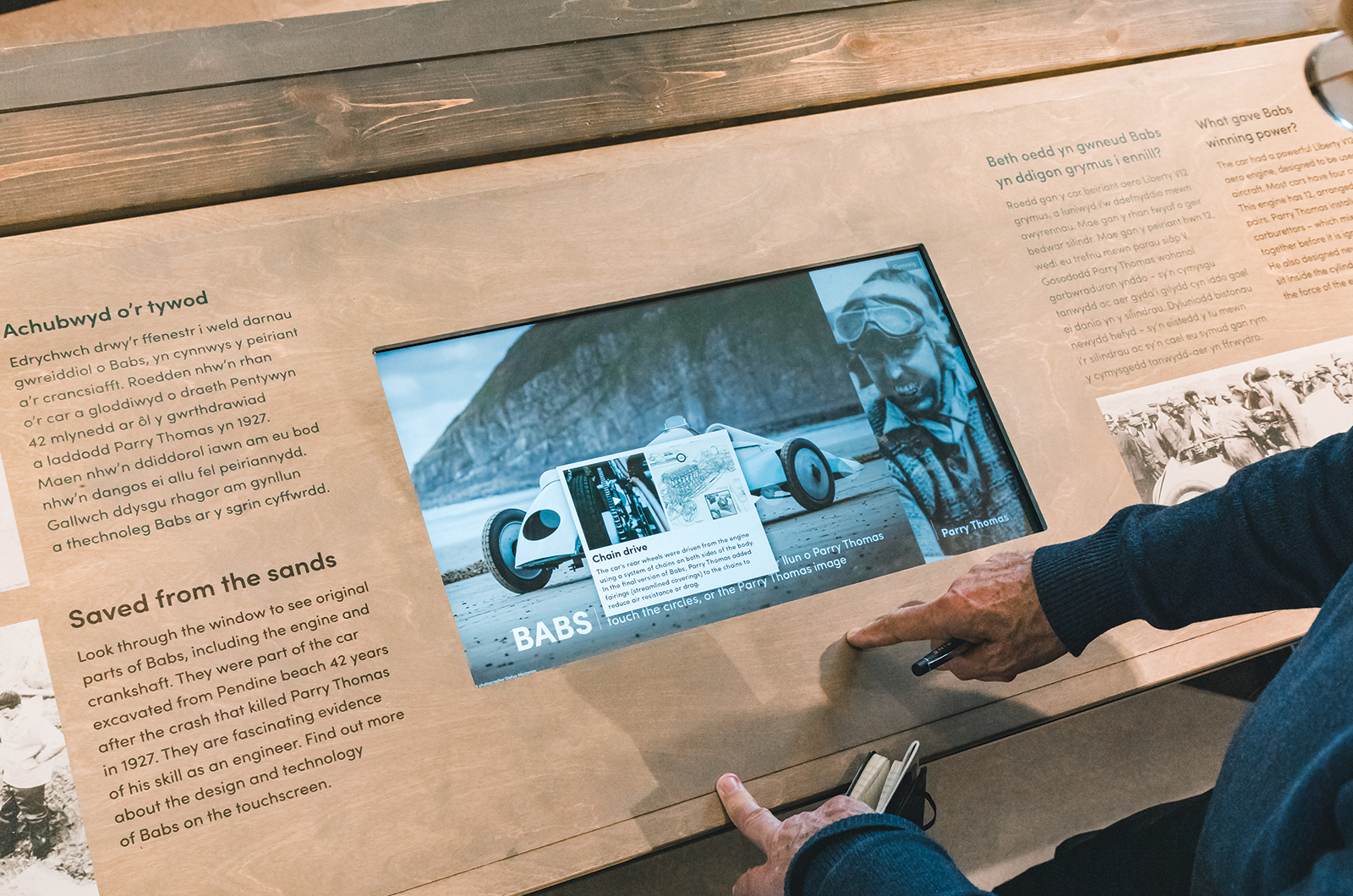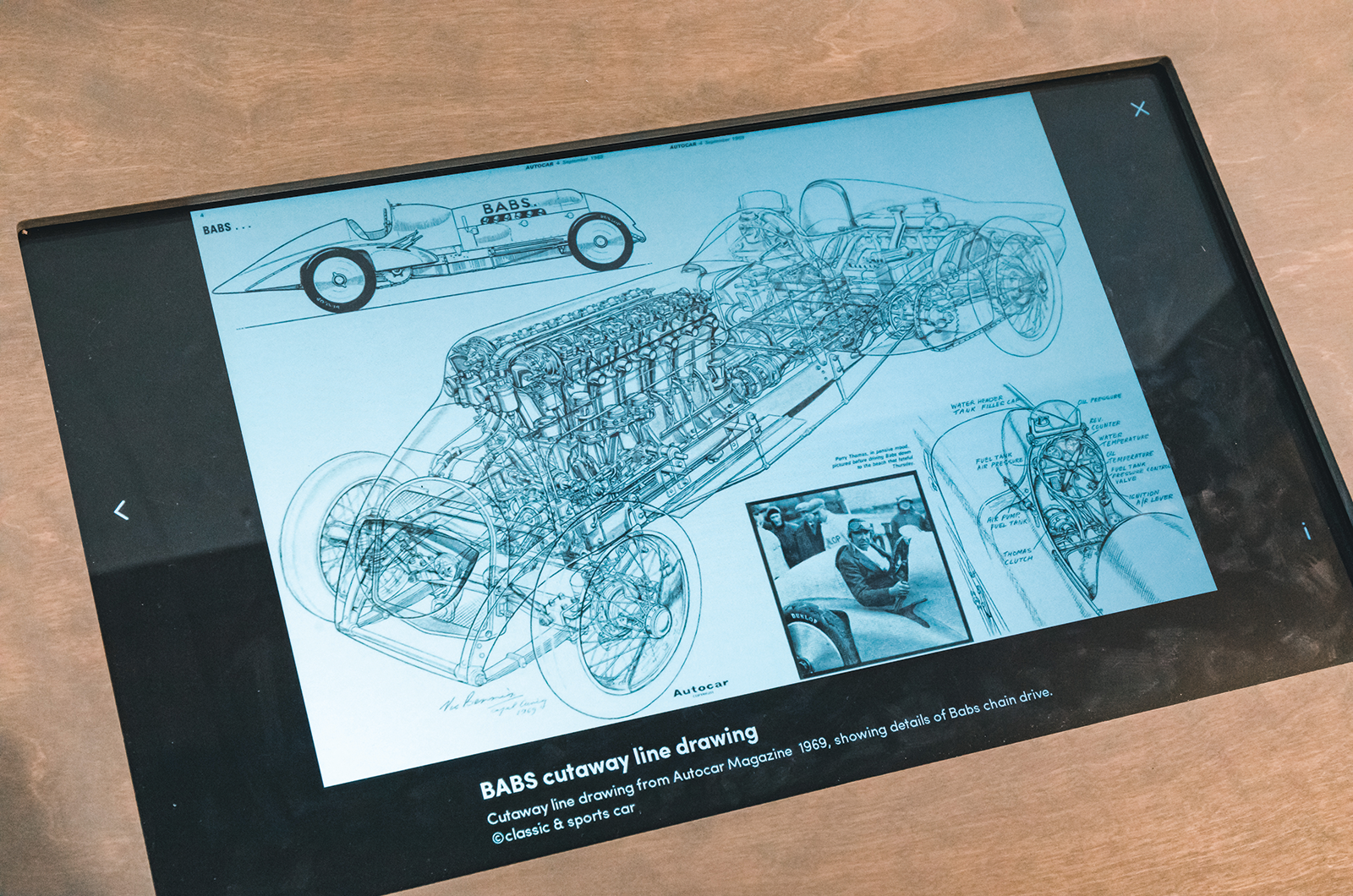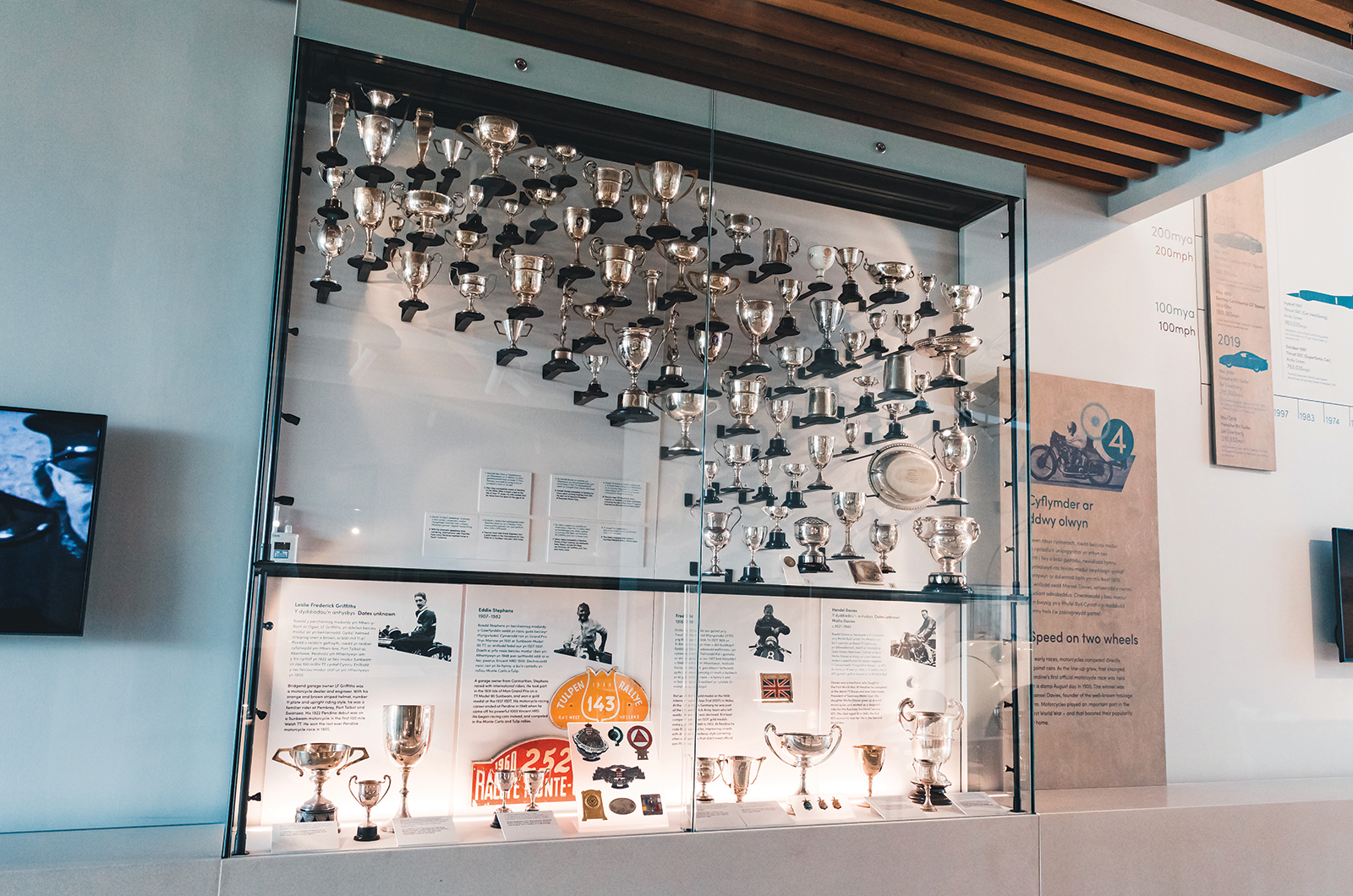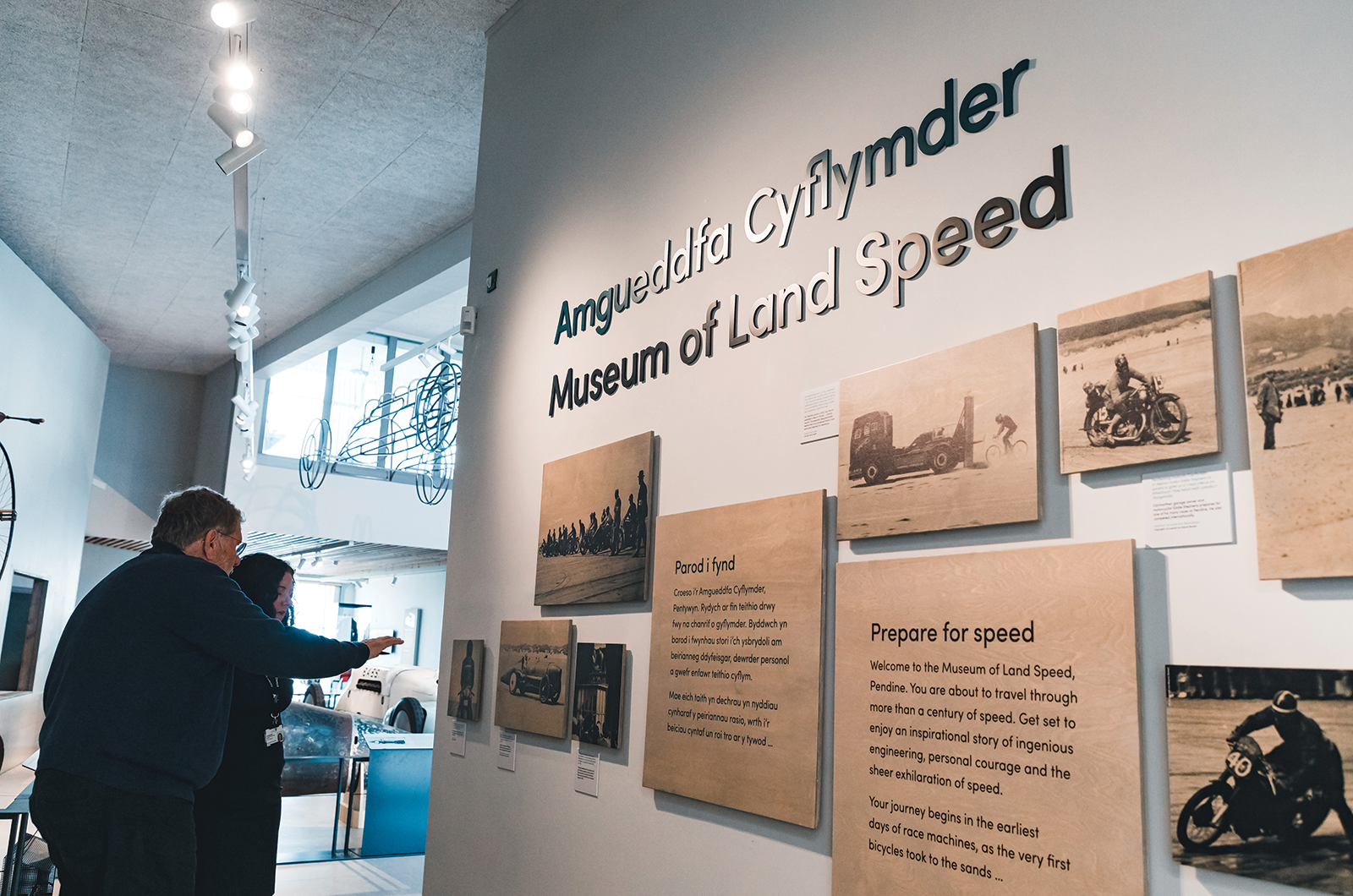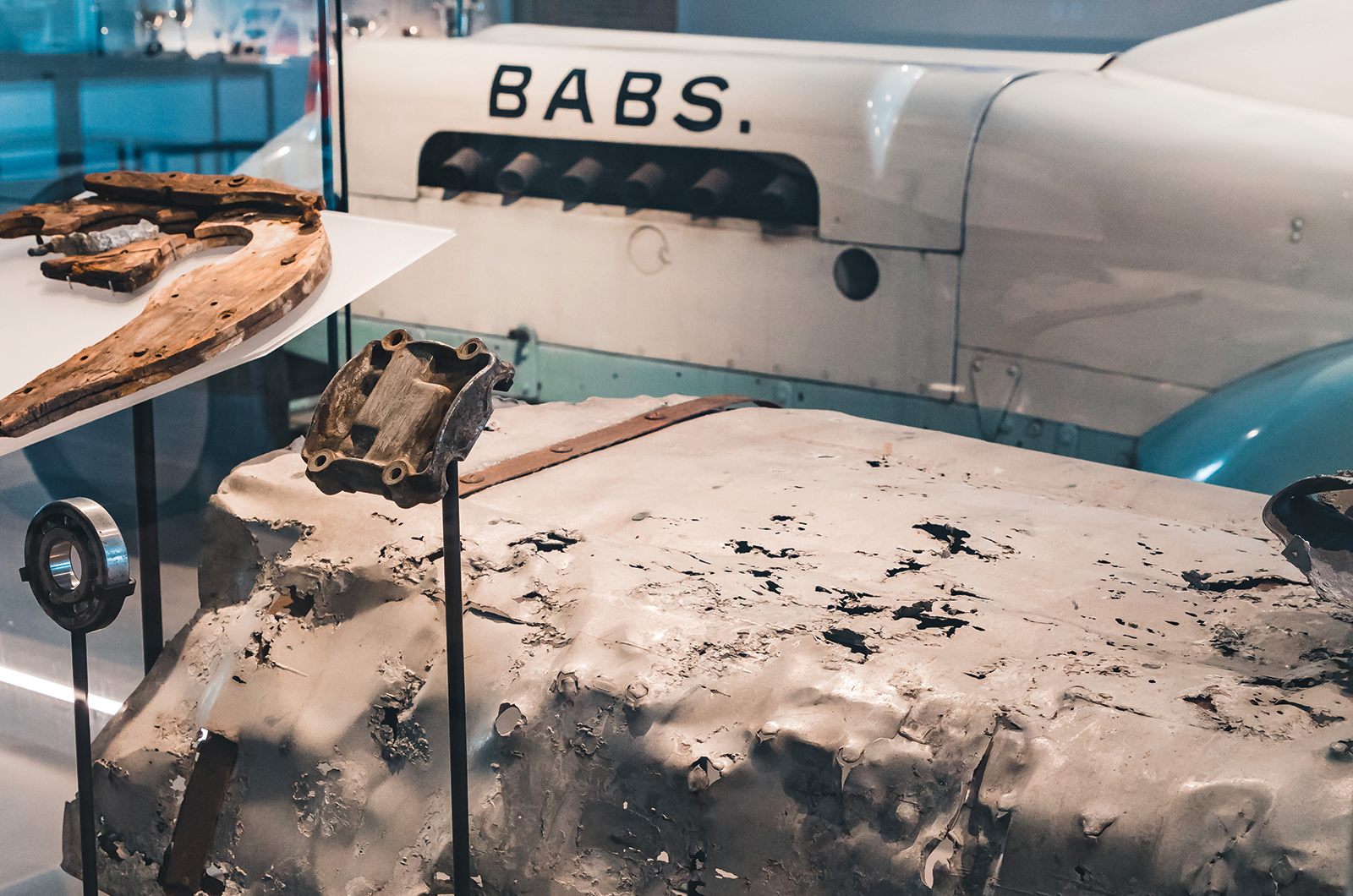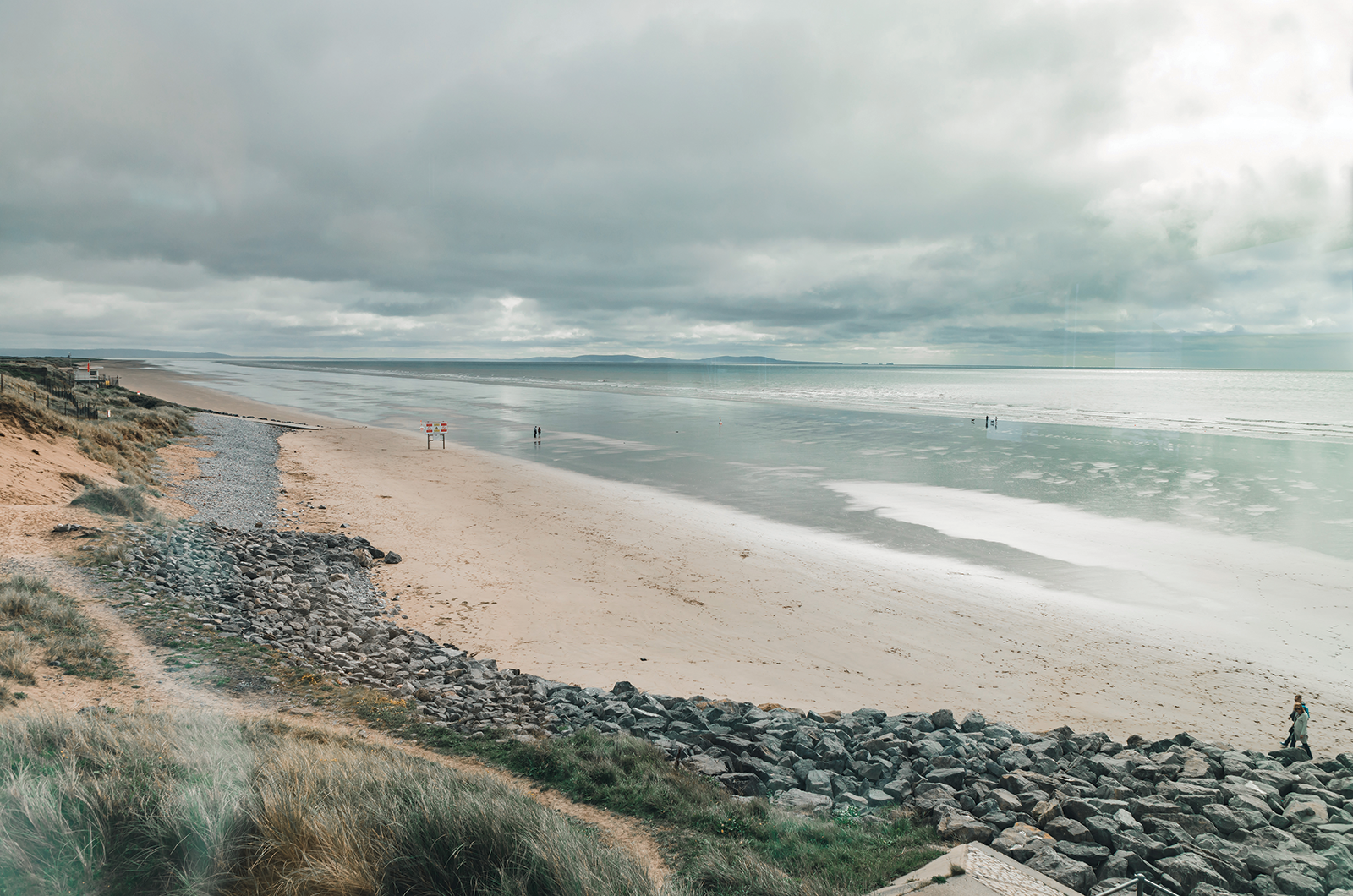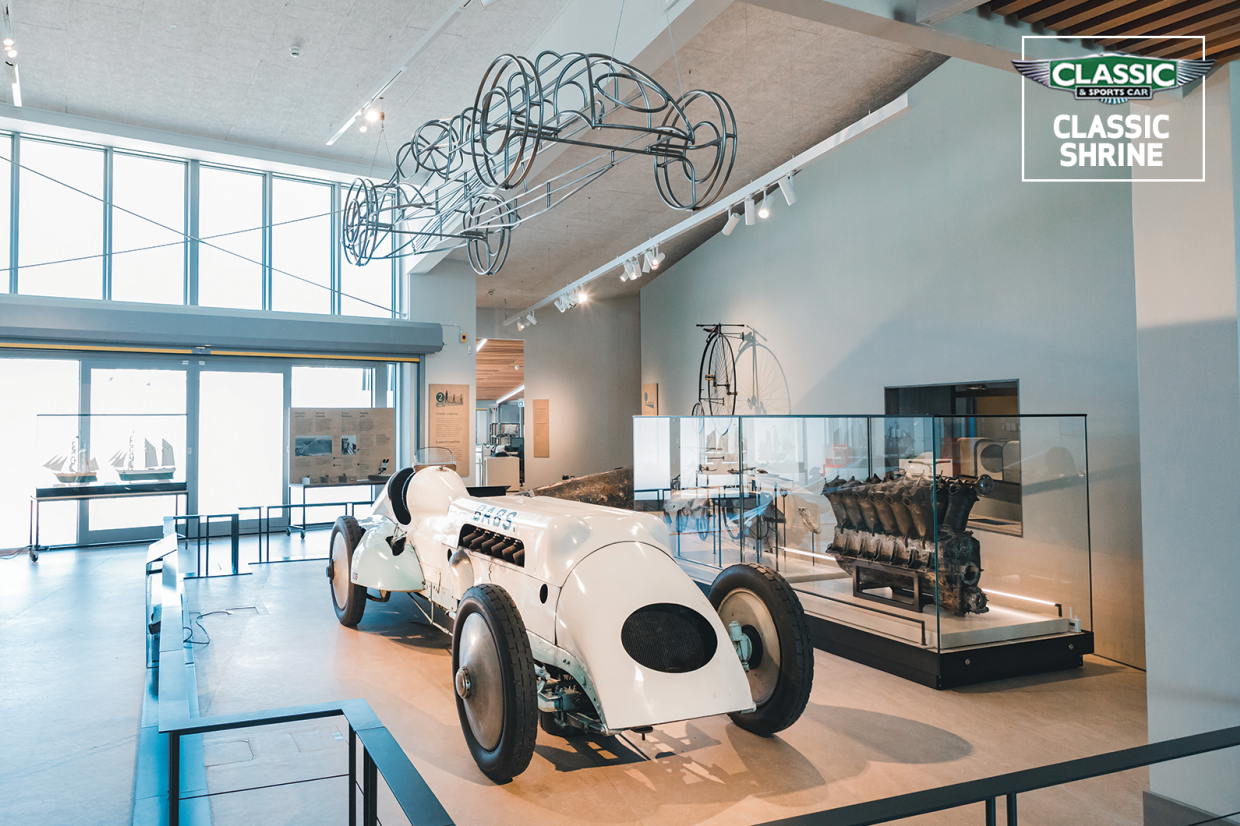
‘In the chronicles of human effort, this corner of Carmarthenshire can take its place alongside Mount Everest and Cape Kennedy.’
So says the official citation that describes Pendine Sands’ impressive new Museum of Land Speed, a beautifully situated, pristine and architecturally exciting building that opened last year to celebrate the many heroic speed-record attempts that have taken place on the historic beach it overlooks.
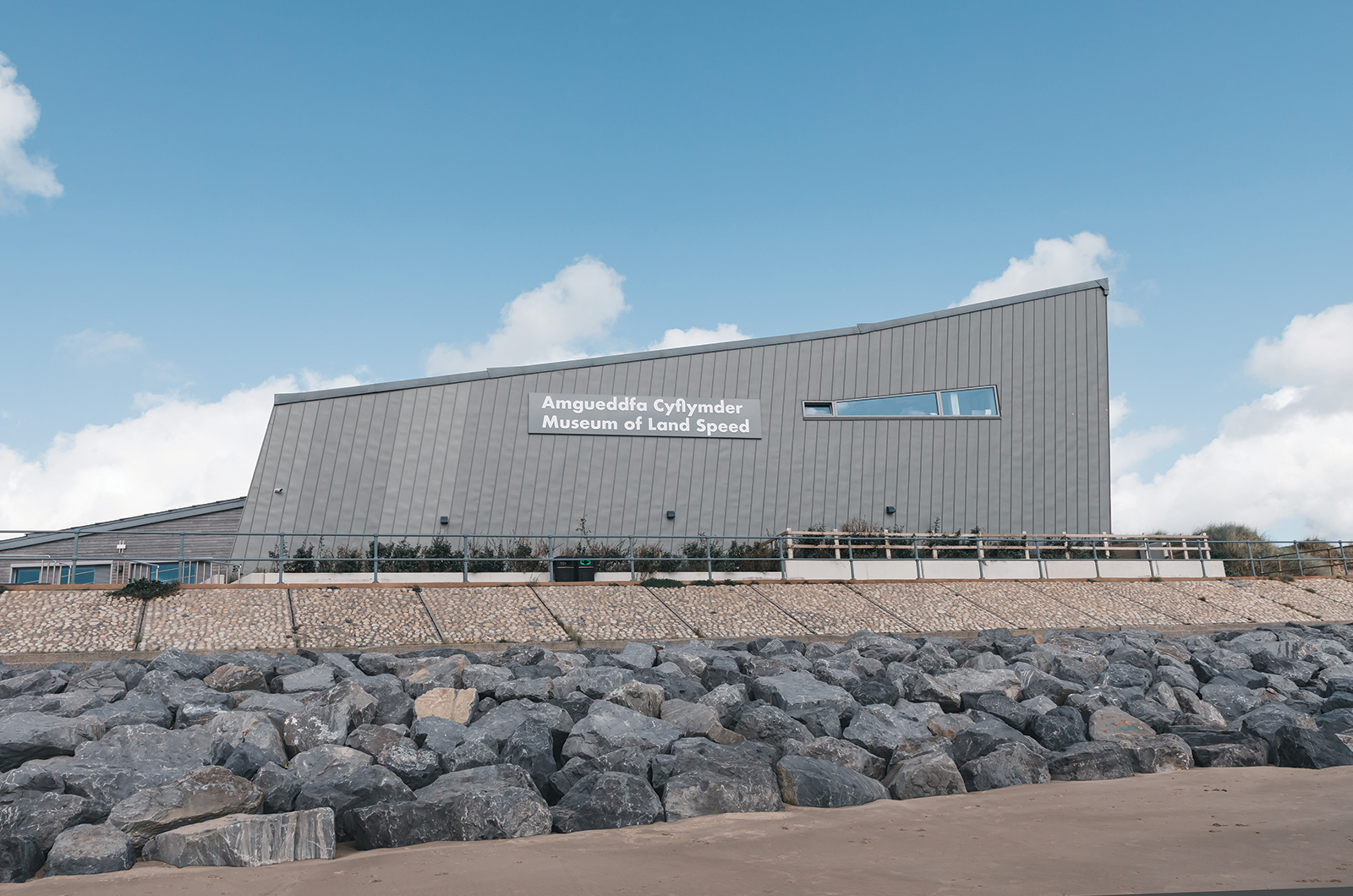
The striking Museum of Land Speed in Pendine battles with its location for attention, but the landscape wins out
The smart new building would ordinarily be modern enough and imposing enough to dominate any setting.
But at this museum’s home on the south-western coast of Wales, the sheer grandeur of the natural surroundings takes centre stage: an impossibly vast expanse of flat, sandy Carmarthenshire beach spreads out in front of Pendine, a coastal settlement of around 500 souls that doubles its population during the holiday seasons.

